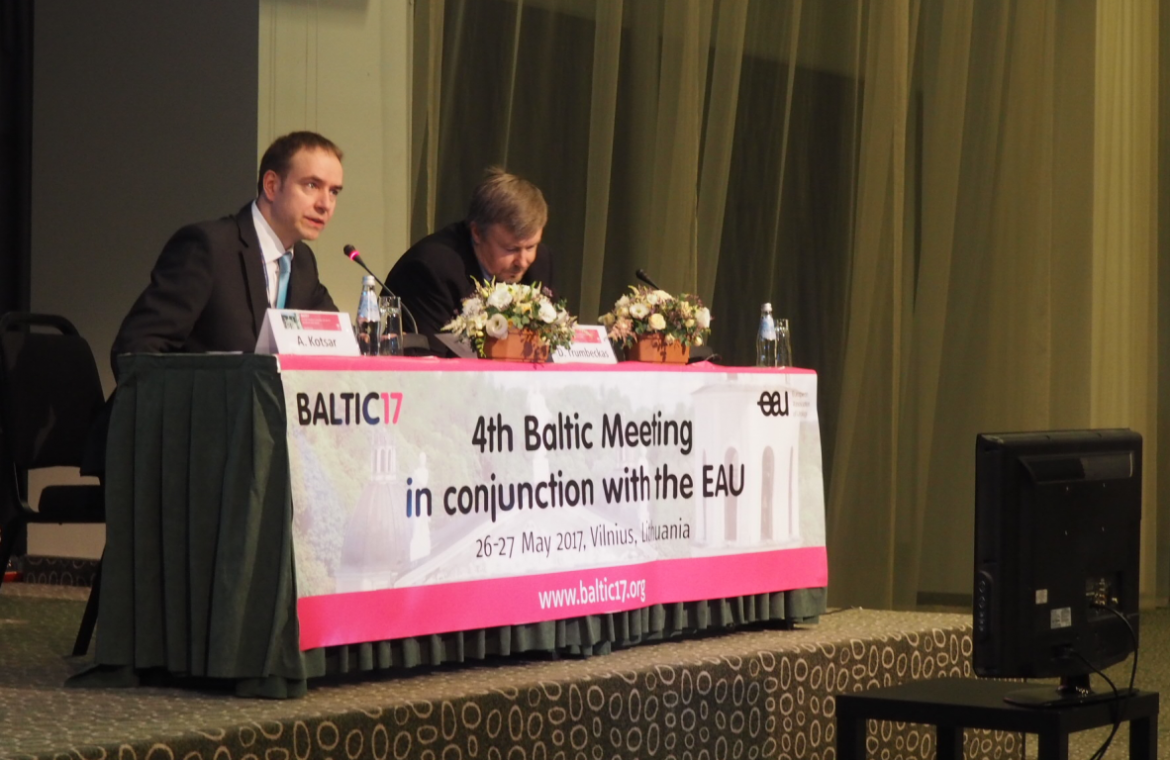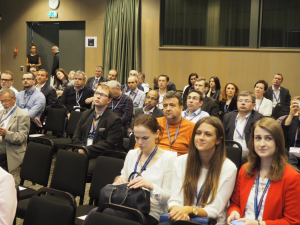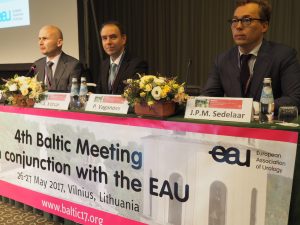Issues and dilemmas in reconstructive and functional urology took centre-stage in the second and last day of the 4th Baltic Meeting in conjunction with the EAU (BALTIC17) with experts discussing a range of treatments, future perspectives and updates on current standards.
Chaired by Profs. A. Kotsar (EE) and D. Trumbeckas (LT), topics included techniques in solving failed urethral reconstruction, modern management of Peyronie’s disease (PD), myths and facts of vasectomy, and the renovascular reconstruction of grafts in kidney transplantation.
EUA Secretary General Prof. Chris Chapple delivered a compact and incisive lecture on failed urethral reconstruction which is widely considered as a challenging procedure due to the low number of cases and the complications affecting patients.
Chapple discussed the main points including epidemiology, the aims of surgery, options in the use of tissue, follow-up procedures and shared his insights on trouble-shooting and surgical technique.
“Adult stricture patients after previous hypospadias repair have poor quality of tissue with extensive scarring,” said Chapple as he highlighted the fact that surgeons encounter the twin challenges of restoring both function and cosmesis. In restoring function, the goals are to restore the patient’s ability to void with a straight stream, remove strictures, replace the urethra and correct the chordee.
Regarding tissue use, there are several sources such as extragenital skin, genital skin, oral mucosa, bladder mucosa, colonic mucosa, matrix and tissue engineering.
“There is no single method that is considered the standard of care,” noted Chapple as he mentioned that common complications include urethrocutaneous fistula and re-stricturing. “In our centre, two-stage urethroplasty with buccal mucosal graft is the preferred choice of treatment in our centre.”
Darius Trumbeckas (LT) spoke on the modern management of Peyronie’s disease (PD) and discussed prevalence, causes, associated co-morbidities, risk factors, diagnosis and evaluation, and the pros and cons of both conservative and surgical treatments. Regarding the surgical option, Trumbeckas said the surgeon’s goal is to correct the penile curvature and allow satisfactory intercourse, a common complaint from patients who suffer from pain and psychological stress.
He also discussed penile shortening and lengthening procedures to correct curvature problems and gave tips on use of grafts. Future perspectives in PD, according to Trumbeckas, include the use of adipose tissue-derived stem cells (ADSCs), use of platelet rich plasma and collagenase clostridium histolyticum (CCH) injections, among others.
Andris Abele (LV) took up the common myths and facts on vasectomy and examined the misconceptions regarding vasectomy’s supposed links to cardiovascular disease, prostate cancer, psychological distress and primary progressive aphasia (PPA), which he debunked by showing the lack of supporting evidence in scientific literature.
“Vasectomy is safe, simple, effective and a permanent surgical contraception method. All available data indicate that vasectomy is not associated with any serious, long-term, side-effects,” he said, while adding that risks linked to any kind of cancer in patients who underwent vasectomy has not been detected.
“Potential systemic effects of vasectomy, including cardio-vascular disease, immune-related diseases or sexual performance have not been proven,” Abele said. He also emphasised the benefits of properly informing patients of the risks and reversibility of the procedure, and the importance of pre-vasectomy counselling to reduce psychological stress.





